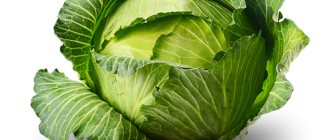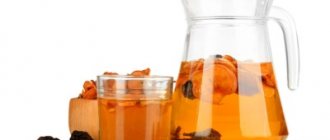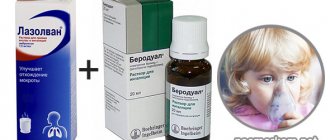It's time to talk about the role of sauerkraut in the diet of children. This product occupies a special place in Russian cuisine - it is used for preparing salads, first and second courses. Do you know at what age children can be offered sauerkraut? Which children is it contraindicated for? What dishes can be prepared from it?
What are the benefits of sauerkraut?
What makes sauerkraut unique is that it contains both prebiotics and probiotics. Due to this, the intestinal microflora improves and the intensity of decay processes decreases (disappears). This product is especially useful for bisbacteriosis, when the body does not produce microorganisms necessary for the formation of normal intestinal microflora. The acids contained in sauerkraut - acetic and lactic - help in the fight against pathogenic microbes.
Dentists note the positive effect of regular use of the product - not only the gums, but also the teeth become stronger. Due to the antibacterial effect, the likelihood of stomatitis and other oral diseases is reduced. It is recommended to eat sauerkraut for dyspepsia, and it is also considered one of the best means of preventing scurvy. Other useful properties:
- Increases immunity. This effect is ensured thanks to pre- and probiotics, supplemented with ascorbic acid and other vitamins.
- A source of vitamins from October to May - at this time it is extremely important to ensure that the body receives a sufficient amount of nutrients.
- Helps reduce blood cholesterol levels - this effect is achieved through flavonoids.
- The isothiocyanates contained in sauerkraut reduce the likelihood of developing malignant tumors in the lungs, intestines, liver and mammary gland. True, research in this direction has not yet been completed.
- Sauerkraut contains B vitamins, which ensure better digestibility of other foods. Thanks to this, the body receives more protein. It’s not for nothing that sauerkraut is considered an ideal partner for meat dishes - this is typical for Russian, German, Czech and Slovak national cuisines.
- Strengthens the walls of blood vessels, reduces the likelihood of nosebleeds.
- With regular use, it stabilizes lipid metabolism and improves blood composition, including blood clotting.
- Sauerkraut is recommended to be consumed to prevent ulcers.
- The folic acid it contains accelerates cell recovery.
- Sauerkraut juice is used to increase appetite - it acts as a catalyst for the digestive system.
Sauerkraut helps well with chronic gastritis with low acidity. It is enough to consume it half an hour before meals for 15–20 days. It also helps lower blood sugar levels, which is why it must be included in the diet of diabetics.
To improve liver activity, a so-called “health cocktail” is used. To prepare it, mix equal parts of tomato juice and cabbage brine. You should drink it three times a day. People use brine to remove Giardia - if you drink it 25-30 minutes before meals, you can remove them from the liver.
Drowning Prevention for Curious Toddlers: What Parents Need to Know
Many babies—curious, active, and eager to explore their surroundings—are attracted to water. It shines, ripples, splashes and can even make things float! But they don't understand that water can be dangerous, and they aren't old enough to do what they need to do in case of danger. Therefore, it is very important to protect them from water hazards where you live and where you visit.
Preschool years = higher risk of drowning than at any other time
Water safety is important for all ages, but especially for children. Drowning is the leading cause of death from injury in children 1-4 years of age. Small children can drown in just an inch or two of water, and this can happen quickly and silently.
The biggest drowning threat families with toddlers face is sudden, unsupervised access to water: swimming pools, hot tubs and spas, bathtubs, natural bodies of water such as ponds, and standing water in homes. For example, 69% of all drownings among children 4 years of age and younger occur while not swimming.
Create multi-layered protection to keep your baby safe
To reduce the risk of drowning and other water-related injuries for children, the American Academy of Pediatrics (AAP) recommends the use of “layers” of protection. When children are not expected to be near water (non-swimming times), barriers can help prevent tragedies during the inevitable short breaks in supervision that are a normal part of each day. Close and constant supervision is required when children play in and around water.
Check for water hazards in your home and the places you visit.
Preventing unintentional, unsupervised access to water has proven to be one of the most effective ways to reduce drowning deaths among young children. Start with these layers of protection in and around your home to make your little one's environment safer.
Fence and guarded pools
Research shows that fencing can prevent more than half of all drownings among young children in swimming pools. Swimming pools, including large inflatable pools and other temporary pools, must be completely fenced on all 4 sides. The fence should:
- be at least 4 feet in height and have no opening underneath or between slats more than 4 inches wide
- completely separate the pool from the house
- have a self-closing and self-closing gate that opens away from the pool, with a latch at least 54 inches from the ground.
Always keep the gates locked and check them often to make sure they are working. Keep toys out of the pool when not in use to prevent children from trying to climb over the fence when they are not swimming. Also be sure to cover and seal hot tubs, spas, and hot tubs immediately after using them.
Removing or fencing other water hazards in the backyard
Baths, fountains and bird ponds . While these can be beautiful landscaping features, consider delaying installing or using them until your child is older.
Wells, irrigation or drainage ditches . Also be careful to prevent children from accessing open post holes while structures such as fences, decks, birdhouses and flagpoles are being installed.
Don't let your child go outside unnoticed
Use safety gates, door locks, or door handle covers to prevent your child from going outside or into the garage undetected. Make sure siblings and other family members know to always lock the door behind them to prevent younger children from following them. .
Empty water containers immediately after use.
Never leave a filled water container with the top open unattended. When not in use, be sure to completely drain liquids from containers such as:
- buckets and pails used for cleaning or painting
- children's pools
- melt ice coolers
- large water containers for pets
- trash cans or garbage cans that can collect rainwater
Block uncontrolled access to bathrooms
The bathroom can be a dangerous place for toddlers. They can fall headfirst into toilets and full bathtubs, or get scalded by water that is too hot. Use safety latches or door handle covers to close bathrooms when not in use. As an added layer of protection, install latches or locks on toilet seat covers and consider removing the tub drain plug when not in use to prevent the tub from filling if a child opens the faucet.
Maintain close, constant supervision in and around the water
When your baby is in or near water, give him your full attention. It is important to avoid anything that might interfere with his concentration, such as using a cell phone, gardening, or drinking alcohol.
Use touch controls in or near water
The AAP recommends staying at arm's length while providing constant "sensory control," whether during bath time or swim time. Most children drown in the bathtub at home, usually without adult supervision. When swimming, go into the water with your baby. If you need to get out, take your baby with you, even if there are lifeguards nearby.
Especially during parties or picnics by the pool or lake, when it is easy to become distracted, designate a “water watcher” to keep an eye on your child at all times. Take turns passing the Water Spotter Card to the next responsible adult after a set amount of time (e.g. 15 minutes).
Use life jackets near lakes and rivers
Children should always wear life jackets when in natural bodies of water, on or near bodies of water such as lakes or rivers. Make sure they fit correctly and are approved by the US Coast Guard. Children and others who lack good swimming skills should also wear life jackets in a pool or water park.
Heartburn can affect anyone, but it usually occurs in those who are obese and eat large amounts of food at the wrong time.
From coffee to chocolate, everything you eat can make your heartburn worse. But there are also foods that can relieve heartburn.
Here are some from Ayush Rekha:
These two fruits have very low acid content. Hence, they are extremely effective in relieving heartburn. Green vegetables such as leafy greens, broccoli, green beans, celery and cauliflower are low in acid. This will also help prevent you from becoming overly acidic. The fiber content and healthy complex carbohydrates in rice are very beneficial in reducing heartburn. Egg whites are a good source of protein. Their low acidity makes them a good remedy for heartburn.
Start swimming lessons as soon as your child is readyThe AAP recommends swimming lessons for all children and their parents as another layer of water safety. Recent research shows that water survival skills training and swimming lessons can help reduce the risk of drowning for all children, including children 1 to 4 years of age. Deciding when to start should be based on a variety of individual factors, including how often your child is likely to be near the water, emotional maturity, physical and developmental abilities and limitations, interest in learning to swim, and how comfortable he or she is in the water. Your pediatrician is a good resource to help you know if your baby is ready. |
Be ready to answer
Know what to do if problems arise. Everyone, including parents, caregivers and older children, should learn artificial respiration and safe drowning rescue techniques. Water safety is a family matter!
Remember
Always remember to keep your baby safe around water - at home, where your friends, family and caregivers live, and where you stay on family trips. Prevent unattended access during non-swimming periods and maintain close surveillance at all times in or around the water. Be sure to talk to your pediatrician during your child's wellness visit about precautions against common water hazards.
Additional Information
The information contained on this website should not be used as a substitute for medical care and advice from your pediatrician. Your pediatrician may recommend different treatment options depending on your individual facts and circumstances.
.
At what age can children have sauerkraut?
It is better not to give sauerkraut to children at an early age. Due to the high salt content, there is a high probability of malfunction of the digestive system and metabolism may be disrupted. This product often causes intense gas formation, accompanied by heaviness in the stomach, unpleasant and sometimes painful sensations. When consumed at an early age, sauerkraut often causes eating disorders.
One of the reasons why sauerkraut is not given to children is because it contains alcohol. And even if its concentration is not particularly high, even this is enough to cause irreparable damage to the baby’s health. The optimal age for first acquaintance with sauerkraut is considered to be 2–3 years. The first portion should be tiny - to check the baby’s reaction to the new product. If the “tasting” goes well, without consequences, the portion should be increased gradually and extremely carefully.
By the age of five, the child’s digestive system is fully formed - when the child reaches this age, he can be offered up to 100 g of sauerkraut per meal. No longer recommended as it may cause colic and bloating.
Composition and calorie content
The nutrients of sauerkraut are (per 100 g):
- carbohydrates (about 5 g);
- proteins (about 1.5 g);
- fats in minute quantities (0.09 g);
- dietary fiber (about 4 g);
- ash (0.8 g);
- water (a little more than 87 g).
Proteins contain essential and non-essential amino acids. Carbohydrates are mainly represented by simple sugars, and starch and dextrins account for only 0.1 g/100 g. The calorie content of 100 g of sauerkraut is 27 kcal.
Vitamins enter the body with sauerkraut:
- E (tocopherol);
- A (retinol);
- C (ascorbic acid);
- PP (nicotinic acid);
- and a whole set of vitamins from group B (B1, B2, B5, B6, B7, B9).
Sauerkraut contains minerals:
- manganese;
- magnesium;
- zinc;
- sulfur;
- molybdenum;
- iodine;
- sodium;
- cobalt;
- rubidium;
- potassium;
- aluminum;
- chromium;
- calcium;
- boron;
- fluorine;
- phosphorus;
- nickel;
- iron;
- lithium;
- copper;
- chlorine;
- vanadium.
Recipes
Bigos with meat
Products: 450-500 g of meat, 100 g of brisket, 200 ml of meat broth, 50 g of onions, one small carrot, 300 g of fresh and sauerkraut, vegetable oil - three tablespoons. spoons, salt and spices - to taste.
Preparation. Chop fresh cabbage, place in a saucepan and simmer. Finely chop the onion, fry in vegetable oil, at the end, when it turns golden, add the grated carrots and place in a saucepan with the cabbage. Cut the meat into small pieces, fry, and also add to the saucepan. Do the same with the brisket; when it is browned, add sauerkraut to it - first rinse and strain it. The final stage of preparation: put all the ingredients in one bowl, add meat broth, add about 50 ml of sauerkraut brine. Simmer for 10–15 minutes.
SAUERCABBAGE IN A CHILD'S DIETE
Sauerkraut is an easy-to-prepare dish that is popular in Russia and loved by housewives. Many mothers would like to offer this tasty product to their child, but they doubt whether it will harm the child’s body? At what age can children be given sauerkraut? In what quantities? Is this product good for children? Let's try to figure it out below.
This product has a very high salt content, so eating it can disrupt the metabolism in the child's body. It will also create poor eating habits.
Cabbage in general, and sauerkraut in particular, is a difficult product to digest. It can cause increased gas formation, pain and heaviness in the stomach, and eating disorders in young children.
Sauerkraut also contains alcohol (albeit in very small quantities). Therefore, while being a useful product for adults and older children, it is strictly contraindicated for infants.
You can introduce sauerkraut into a child’s diet, if he is healthy and does not suffer from digestive system disorders, from the age of two to three, but in small quantities. At the age of five, the formation of the child’s enzymatic system ends, digestion processes are stabilized, so from this age parents can offer their children sauerkraut “according to their appetite.” About the benefits of sauerkraut for a child.
Cabbage is a very healthy vegetable. It contains a large amount of vitamins, in particular - vitamin C in high concentration, mineral salts, useful acids, all of which are especially in demand by the children's body, whose systems are in a state of growth and development. In addition, cabbage is a source of fiber necessary for normal digestion. Almost all beneficial substances are preserved in sauerkraut. At the same time, oddly enough, during the fermentation process the content of vitamins in it even increases! In addition, probiotics are formed in sauerkraut due to lactic acid fermentation - substances that help restore intestinal microflora.
Thanks to the vitamins and active substances contained in sauerkraut, it is even used in folk medicine to relieve inflammation and protect the body from infectious diseases. In the autumn-winter period, including sauerkraut in the diet of children will strengthen the immune system. Sauerkraut also helps cleanse the child’s body of parasites, but in this case you should not neglect the medications prescribed by the doctor. Recent research by scientists has contributed to the list of beneficial properties of sauerkraut. It has been shown that the active substances contained in it protect brain cells and destroy enzymes that lead to memory loss.
Rules and recipes for making sauerkraut:
1. To prepare sauerkraut, choose late winter varieties. The heads of such cabbage are dense, heavy, and the leaves are white. 2. Wooden, glass or enamel dishes are suitable for fermentation. Plastic containers and metal utensils with coatings cannot be used, since the active substances formed as a result of fermentation may react with metal or plastic to form toxic compounds. When using enamel cookware, be sure to ensure that there are no chips or scratches on it. 3. Several times a day, the mass of sauerkraut should be pierced with a wooden stick to release the accumulated air. 4. It is necessary to ensure that fermentation processes do not turn into rotting. This can happen if the container of sauerkraut has been left in a warm room for too long, or if dirt has gotten into it. A sign of product spoilage may be a strong unpleasant odor and abundant foam on the surface. This sauerkraut should not be consumed not only by children, but also by adults. 5. It is better to ferment cabbage in large volumes, at least in a three-liter jar filled entirely. When fermenting cabbage in small quantities, it may turn out to be dry and lose its crunch and pleasant elastic consistency.
THE RECIPE FOR SERVED CABBAGE CAN BE FOUND BY CLICKING ON THE LINK BELOW:
Fermenting cabbage at home
Glass dishes are perfect for fermenting cabbage at home.
You can ferment cabbage yourself. Winter varieties of cabbage are suitable for this. Its heads are heavy and dense, the leaves are white.
The minimum container volume is 3 liters (for example, a glass jar). If you use less volume, the cabbage may be dry and less tasty.
There are many recipes for making sauerkraut: you can cook it with apples, cranberries, pumpkin, lingonberries, cumin, honey, zucchini.
The classic version of ripening cabbage:
- you need to take 3 kg of cabbage, peel the heads of cabbage from the top leaves and chop it into strips;
- add 20 g of salt and rub the cabbage with your hands until the juice is released;
- add about 200 g of carrots, coarsely grated, and 3 tbsp sugar. l.;
- mix everything well and place tightly in a bowl;
- placing oppression on top, the cabbage should be left indoors at a temperature of about 20 ° C for 3-7 days;
- several times daily you need to pierce the cabbage with a wooden stick and release the air accumulated inside;
- the ripening period depends on the variety and degree of chopping of cabbage during shredding, and on the air temperature in the room;
- Once the cabbage is ready, determined by taste, the container should be placed in a cool, dark place (refrigerator, cellar).
It is not advisable to keep cabbage in a warm place so that the fermentation process does not turn into rotting. Damage is indicated by the appearance of an unpleasant, pungent odor and the appearance of abundant foam on the surface. This product should not be used.
The effect of the product on the children's body
During the fermentation process, cabbage juice ferments under the influence of lactic acid. The finished product contains probiotic and prebiotic cultures and is easier to digest than fresh vegetables. Salted and sauerkraut is a valuable source of vitamins and minerals. Ascorbic acid is almost 5 times more than in citrus fruits. In addition to this, the product contains:
- thiamine;
- riboflavin;
- folic acid;
- tocopherol;
- carotene;
- iron;
- phosphorus;
- calcium;
- boron;
- zinc;
- copper.
Without these elements, the full functioning of the body, proper metabolism, formation and strengthening of tissues are impossible.
The specific properties of the product include its ability to stimulate the secretion of gastric juice, pancreatic enzymes, bile, and activate intestinal function.
Cabbage brine improves appetite, has an antimicrobial effect, strengthens the immune system, prevents intoxication, relieves insomnia, and helps in the treatment of giardiasis and helminthiasis.
The richness of enzymes, sodium and dietary fiber makes sauerkraut unsuitable for children under 2 years of age.
The digestive tract of babies is not adapted to break down coarse fiber, and juice and acids can provoke increased gas formation. The energy value of pickling is low - only 20 kcal/100 g. The product cannot serve as a complete food.
At what age can it be included in the diet?
Sauerkraut can benefit children older than 2.5–3 years.
For the first time, the product should be offered to the child as part of a dish with a neutral or mild taste, for example, mashed potatoes. 1-2 tbsp is enough. l.
Brine diluted in half with water for preventive purposes or to improve appetite can be drunk from 2 years old: ½ cup.
If your child categorically does not like the dish, there is no need to insist. It takes some time to get used to the specific pungent taste of the product. To make it more attractive, it is recommended:
- Soak the cabbage for 5-10 minutes before eating. in sweetened water to remove excess acid;
- add refined vegetable oil.
You can include the product in the menu 1-2 times a week. Children over 4 years old can be offered a portion of up to 100 g. After 7 years, if tolerated well, the vegetable can be eaten as part of any dishes or on its own.
Possible harm and contraindications
Despite the enormous benefits of sauerkraut, it should not be given to small children.
- A relatively high salt content in the product can disrupt the water-salt balance in the baby’s body.
- If a child has edema, this product should not be given to him.
- Due to the imperfection of the digestive system in early childhood, consuming sauerkraut can cause increased gas formation, flatulence, heaviness and pain in the abdomen, and bowel dysfunction.
- Substances from sauerkraut slow down the absorption of iodine. Therefore, children at risk for thyroid pathology can introduce the product into their diet only after consultation with an endocrinologist.
If a child has chronic diseases, it is better to introduce the product into the diet after consultation with a doctor.
What to combine with
Other foods with a sour or spicy taste in combination with sauerkraut are not suitable for baby food. You cannot add mustard, horseradish, raw onions, or cranberries to it. Pickled or pickled cucumbers and mushrooms are also undesirable.
A large amount of salt, bitterness, and acid provoke irritation of the gastrointestinal mucous membranes, cause excessive secretion of enzymes, and can lead to nausea, indigestion and colic.
Recommended dishes with sauerkraut for kids:
- vinaigrettes without seasoning;
- cabbage soup with chicken broth or vegetarian;
- vareniki.
You can add it as a side dish to boiled meat or cutlets. It is important to remember that heat treatment leads to the loss of a significant part of the vitamins. But children can eat more sauerkraut in stewed or boiled form, since it is more easily processed in the gastrointestinal tract.
Minuses
- Due to the content of coarse fiber, it can irritate the gastrointestinal mucosa.
- Consumption in large quantities leads to abdominal pain, flatulence and problems with stool.
- Although rare, allergies can occur.
- Sauerkraut contains vinegar, which can harm children's digestive tract.
- Due to the increased content of histamine in sauerkraut, its use can lead to a pseudo-allergic reaction (signs of allergy appear).
Problems with the absorption of cabbage can be avoided by introducing it into the baby’s diet in minimal portions.
Summary of the lesson “Sauerkraut” in the senior group of kindergarten
Kosova Elena Alexandrovna
Summary of the lesson “Sauerkraut” in the senior group of kindergarten
Objectives: To introduce the technology of making sauerkraut . Teach children to notice changes during cabbage .
- to consolidate the signs of autumn, to help understand that autumn is the time of harvest;
-clarify ideas about vegetables, where they grow, and people’s activities in the fall
(preparing vegetables for the winter)
;
-introduce the variety of types of cabbage , its beneficial properties and importance in healthy human nutrition;
-instill interest in theatrical and play activities;
— activate children’s speech and ability to draw conclusions;
— deepen children’s knowledge about Russian folklore, the folk and Orthodox calendar;
Educators: cultivate a careful and respectful attitude towards food.
To cultivate attentiveness, accuracy, caution when working with heavy and sharp objects, to cultivate perseverance and perseverance.
develop speech - learn to make inferences and conclusions, activate children’s vocabulary.
heads of fresh cabbage (white and red), carrots, grater, salt.
pictures depicting different types of cabbage ,
basket with vegetables (potatoes, carrots, onions)
-examination of photographs and illustrations with various types of cabbage and healthy products;
-reading works of fiction about vegetables;
-drawing and modeling vegetables.
Summary for parents
You can diversify your child’s diet by offering him sauerkraut stew for lunch.
Sauerkraut is a very healthy product that will enrich the child’s body with vitamins and minerals, help prevent a number of diseases, and cope with dysbacteriosis.
The product can be introduced into the diet of healthy children from 2-3 years of age. If you have problems with digestion, you should wait for the digestive system to fully mature and start giving your child sauerkraut after 5 years.
If you have the slightest doubt about a new product, your mother should consult a doctor. It is important to follow the rules for introducing a new dish into the diet, and then sauerkraut will only benefit the child.











